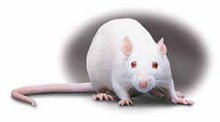Consider the lowly pill bug (= roly-poly or doodlebug). There is a little worm, or nematode (or roundworm), which depends upon the pill bug and the European starling for its life cycle. After growing in the starling as an adult (and not harming the bird), it lays eggs in the gut. The droppings containing eggs are eaten by pill bugs. The larvae hatch inside the pill bug and grow inside. Once the pill bug gets large enough, the nematode affects the pill bug's behavior causing it to leave its warm, dark, humid nests and go wandering about in full sunlight and over all sorts of revealing terrain. In response, birds like the starling are more likely to eat the little bugger, thus insuring that the larvae is passed on to the starling to grow to adulthood and continue this fascinating little arrangement. Go HERE for more details.
Another example of a parasite changing the host's behavior involves a parasitic fluke and the little killifish. The fluke grows in horned snails. When mature, it swims out into its marsh and latches onto a killifish's gills, then enters the poor fish and goes to the fish's brain. Yow. Not surprisingly, the fish starts darting around, jerking, and flashing (wouldn't you??) and is four times more likely to be eaten by a shore bird. Once eaten, the fluke enters the system of the bird, lays its eggs, and the droppings are eaten by more horned snails, where they hatch and grow. Go HERE for more details.
So examples of parasites changing the behavior of their hosts to get eaten is not so uncommon. But now some researchers have stumbled upon an altogether different mechanism. A parasite of an ant species makes the ant look like berries, which are yummy to birds:
http://www.physorg.com/news119712765.html
 Some Panamanian birds, innocently pecking away at nice, juicy berries, are inadvertently murdering helpless little ants now, and getting themselves infected with parasites. Not because they like ants, but because the ants are eating a particular species of nematode that, upon laying its eggs in the abdomen of the ants, cause the ant abdomens to swell up and turn bright red like local berries, thus fooling the birds. Nifty. (Another really cool bit of this story is that these ants also have the ability to glide, changing course mid-flight if they fall off of tree limbs!).
Some Panamanian birds, innocently pecking away at nice, juicy berries, are inadvertently murdering helpless little ants now, and getting themselves infected with parasites. Not because they like ants, but because the ants are eating a particular species of nematode that, upon laying its eggs in the abdomen of the ants, cause the ant abdomens to swell up and turn bright red like local berries, thus fooling the birds. Nifty. (Another really cool bit of this story is that these ants also have the ability to glide, changing course mid-flight if they fall off of tree limbs!).So if you happen to be going to Panama's Barro Colorado Island, be careful which berries you eat!



1 comment:
see this replica gucci handbags view it Chloe Dolabuy redirected here article
Post a Comment